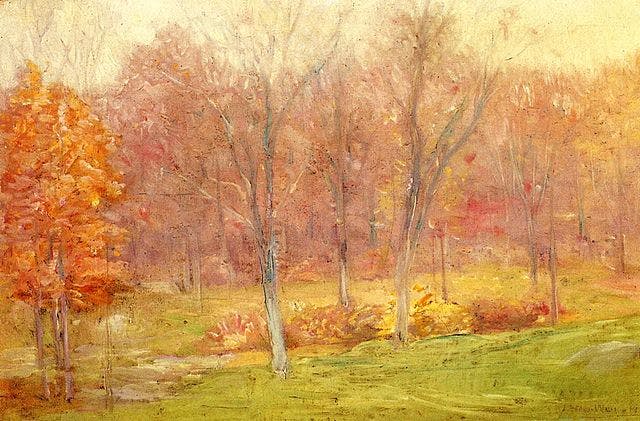Poem of the Day: ‘The Death of Autumn’
We know, in some abstract way, that the year will be reborn after winter, but what power does that knowledge have to ease the heart that sees only the death of summer?

In 1921, Edna St. Vincent Millay (1892–1950) published “Second April,” her third book of poetry — and demonstrated what careful readers had suspected for some while: This was a poet completely in command of her craft. The 1917 “Renascence: and other poems” and the 1920 “A Few Figs From Thistles” owed at least some of their popularity to the cultivated image of the author’s narrative voice: a wild child, a deep-seer, a mystical visionary of beauty, and a young woman wandering the universe. “Second April” showed that she was, at root, a poet dedicated to craft: the perfect sonnets, the nuanced weights of syllables as she varied her meters, the metaphors and images with which she worked. Even the simple rhymes, using rhyme not for show but for purpose. In “The Death of Autumn” she writes 11 lines of pentameter to paint a picture of fall at its bleakest. We know, in some abstract way, that the year will be reborn after winter, but what power does that knowledge have to ease the heart that sees only the death of summer? “Oh, Autumn! Autumn! — What is the Spring to me?”
The Death of Autumn
by Edna St. Vincent Millay
When reeds are dead and a straw to thatch the marshes,
And feathered pampas-grass rides into the wind
Like agèd warriors westward, tragic, thinned
Of half their tribe, and over the flattened rushes,
Stripped of its secret, open, stark and bleak,
Blackens afar the half-forgotten creek, —
Then leans on me the weight of the year, and crushes
My heart. I know that Beauty must ail and die,
And will be born again, — but ah, to see
Beauty stiffened, staring up at the sky!
Oh, Autumn! Autumn! — What is the Spring to me?
___________________________________________
With “Poem of the Day,” The New York Sun offers a daily portion of verse selected by Joseph Bottum with the help of the North Carolina poet Sally Thomas, the Sun’s associate poetry editor. Tied to the day, or the season, or just individual taste, the poems will be typically drawn from the lesser-known portion of the history of English verse. In the coming months we will be reaching out to contemporary poets for examples of current, primarily formalist work, to show that poetry can still serve as a delight to the ear, an instruction to the mind, and a tonic for the soul.
